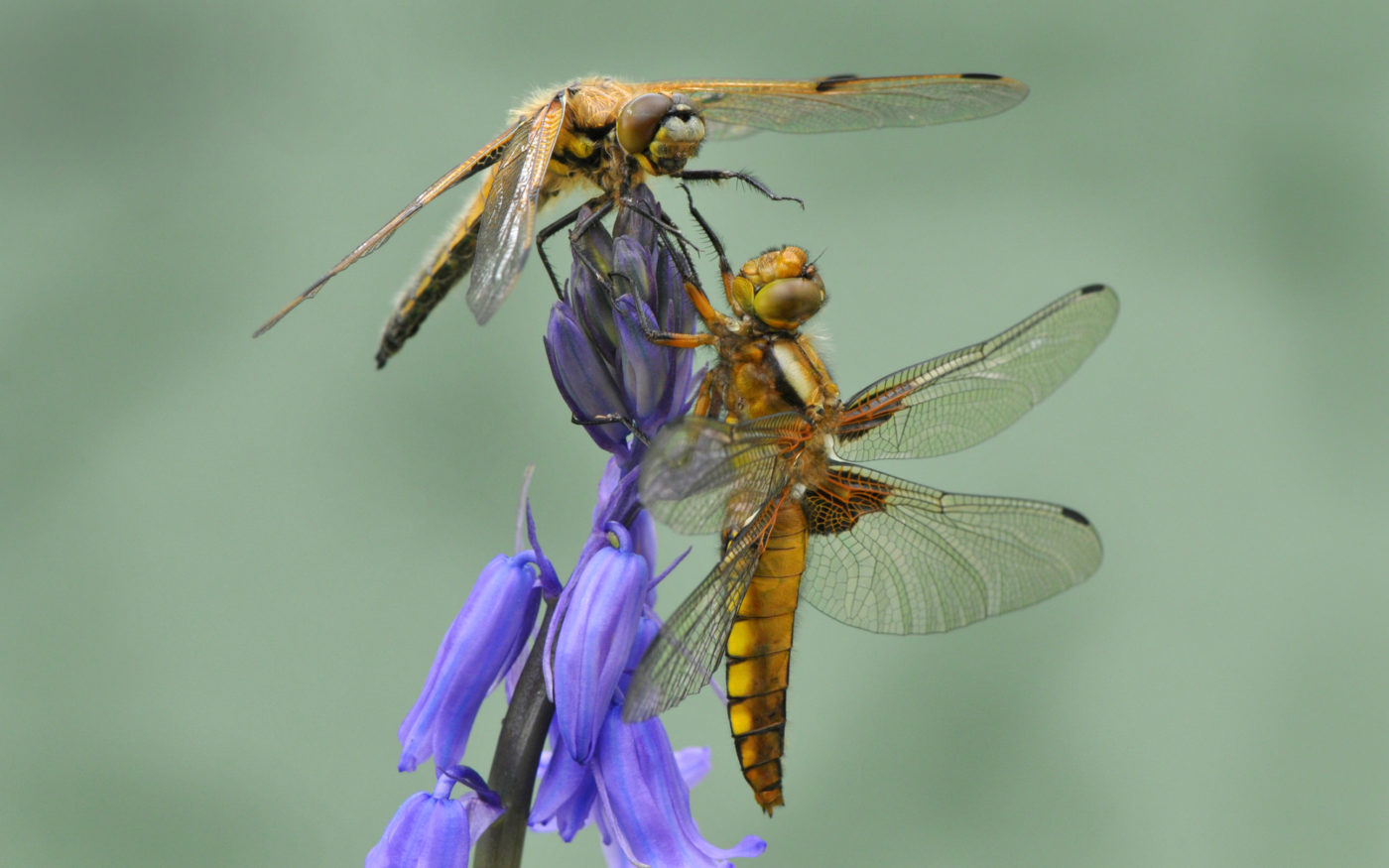Order
Dragonflies and damselflies
Dragonflies are similar to damselflies, but hold their wings horizontally at right-angles to their body when at rest. Adults of dragonflies and damselflies have large eyes and are usually found near freshwater, though dragonflies are strong fliers and are sometimes found some distance from water.
What do they look like?
The Four-Spotted Chaser is 45-48 mm long, with a wingspan of 74-78 mm. The body is generally brown in colour, with the abdomen darkening from a yellowish-brown near the front to black at its tip. From the side, yellow markings can be seen along the side of the abdomen. The distinctive feature of the Four-Spotted Chaser is that there is an obvious dark brown spot near the middle of the leading edge of each wing (in addition to the dark spot near the tip of each wing, and the dark patch at the base of each hind wing).
(The Four-Spotted Chaser is similar in general appearance to females and immature males of the Broad-Bodied Chaser (Libellula depressa) and the Black-Tailed Skimmer (Orthetrum cancellatum), but these two species do not have the dark spots near the middle of their wings.)
Where do they live?
Four-Spotted Chasers are particularly common on or near lowland ponds and small lakes, often with little open water, but are also found near larger lakes and at brackish sites.
Where can they be found?
Four-Spotted Chasers are found throughout most of Europe. In Britain, the species is common and widespread, but is absent from some parts of north-east England.
When can you see them?
Adults are found flying from mid-May to mid-August.
Life cycle
Mating is brief and takes place in mid-air. The female often lays her eggs alone, but is sometimes guarded by the male. The eggs are released as the female dips or flicks the tip of her abdomen on the water surface over patches of aquatic plants. The eggs hatch after about a month. The nymphs live underwater among plant debris, where they grow for over two years. When they are fully developed, they leave the water – usually early in the morning – and shed their skins to emerge as winged adults on vegetation by the water’s edge or on leaves and stems sticking out of the water.
What do they do?
The males are very territorial, leaving their chosen perch to find females, chase rival males or bully smaller dragonflies, often returning to perch on the same twig, branch or leaf at the water’s edge.
Did you know?
Dragonflies and damselflies look beautiful but they are predators, catching other insects in flight when they are adults, and hunting them underwater as nymphs.

